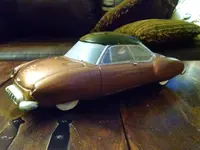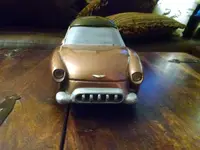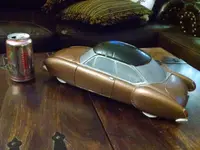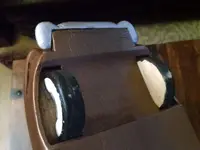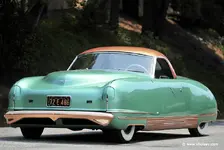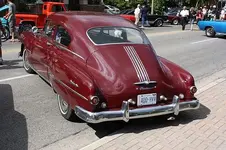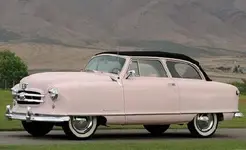Just tidying up some blasts from the past (including some very ancient ones), largely for the benefit of anyone searching the site for information.
That’s rather cool. It looks to be right for 1/12th scale and, if it is, I would say it’s a fairly typical example of entries for the ‘Fisher Body Craftsman’s Guild’ competition and likely from the late 1940s or from the 1950s.
Beginning in 1930, the Fisher Body Division of General Motors sponsored an annual competition for young hobbyists to build models of a Napoleonic carriage (the Fisher Body logo) to demonstrate their craft skills. In 1937 the contest was expanded to include model automobiles and by 1948 it was automobile models only, with stylish prototype designs for cars of the future being very popular. Often, the features in the entries inspired the design of new GM automobiles and many of the winners went on to become designers for GM or other automative companies.
The contest was a chance to win scholarships, cash prizes, and a once-in-a-lifetime all-expenses paid trip to Detroit for the regional winners. The contest was divided into junior (ages 12-16) and senior (ages 17-21) divisions, with state winners then competing in one of 20 regions, and then at national level to compete for scholarships. General Motors awarded four scholarships in each division: first prize was a $5,000 scholarship; second $4,000; third $3,000; and fourth $2,000. Additionally, there were ten $1,000 styling awards which could be presented to any model entered, regardless of whether or not it was a state or regional winner.
Models had to be produced to 1/12th scale and were usually carved from balsa or poplar wood, cast from plaster, or a mixture of both and then painted. Since it was the bodywork design being judged, realistic windows weren’t a necessary feature and were usually just grey- or silver-painted onto the body.
It was the largest youth contest of its day, rivalling the Soap Box Derby and the later BSA Pinewood Derby. Here’s 18-year old Harvey E. Whitman’s winning entry in the 1948 national senior division, for which he received a $4,000 scholarship. It’s made from plaster with aluminium detailing on the front and rear. The windows are painted an opaque grey, and the maple tyres are painted to resemble whitewalls.



